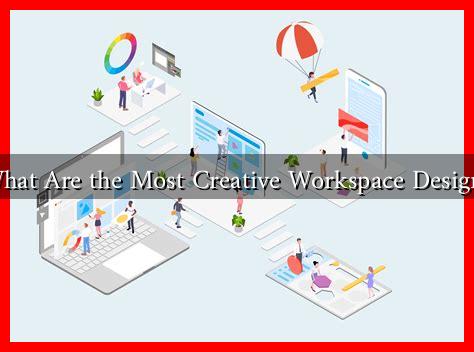-
Table of Contents
What Are the Most Creative Workspace Designs?
In today’s fast-paced and ever-evolving work environment, the design of a workspace plays a crucial role in enhancing productivity, creativity, and employee satisfaction. As companies strive to attract and retain top talent, innovative workspace designs have emerged as a key differentiator. This article explores some of the most creative workspace designs, highlighting their unique features and the benefits they offer to organizations and their employees.
The Rise of Open-Concept Workspaces
Open-concept workspaces have gained popularity in recent years, breaking away from traditional cubicle layouts. These designs promote collaboration and communication among team members, fostering a sense of community. Key features of open-concept workspaces include:
- Flexible Layouts: Movable furniture and modular designs allow for easy reconfiguration based on team needs.
- Shared Spaces: Common areas such as lounges, kitchens, and meeting rooms encourage informal interactions.
- Natural Light: Large windows and open spaces maximize natural light, creating a more inviting atmosphere.
Companies like Google and Facebook have embraced open-concept designs, resulting in increased collaboration and innovation. According to a study by the Harvard Business Review, employees in open workspaces reported a 20% increase in face-to-face interactions.
Biophilic Design: Bringing Nature Indoors
Biophilic design integrates natural elements into the workspace, promoting well-being and reducing stress. This approach recognizes the positive impact of nature on mental health and productivity. Key aspects of biophilic design include:
- Indoor Plants: Incorporating greenery can improve air quality and enhance mood.
- Natural Materials: Using wood, stone, and other organic materials creates a calming environment.
- Water Features: Fountains or aquariums can provide soothing sounds and visuals.
Case studies show that companies like Amazon and Microsoft have successfully implemented biophilic design principles. A report from the World Green Building Council found that workplaces with biophilic elements can increase productivity by up to 15%.
Co-Working Spaces: A New Era of Collaboration
Co-working spaces have revolutionized the way freelancers, startups, and established companies operate. These shared environments foster collaboration and networking among diverse professionals. Key features of co-working spaces include:
- Community Events: Regular workshops and networking events encourage collaboration and skill-sharing.
- Variety of Workspaces: Options range from private offices to communal tables, catering to different work styles.
- Flexible Memberships: Users can choose from daily, monthly, or annual memberships based on their needs.
WeWork is a prime example of a successful co-working space provider, with locations worldwide. According to a survey by Deskmag, 86% of co-working space members reported feeling more motivated and productive.
Remote Work and Home Office Innovations
The rise of remote work has prompted individuals to rethink their home office setups. Creative home office designs prioritize comfort and functionality. Key elements include:
- Ergonomic Furniture: Adjustable desks and supportive chairs promote better posture and reduce fatigue.
- Dedicated Work Zones: Separating workspaces from living areas helps maintain focus and work-life balance.
- Personalization: Adding personal touches, such as artwork or family photos, can enhance motivation and comfort.
Statistics from Buffer’s State of Remote Work report indicate that 98% of remote workers would like to work remotely at least some of the time for the rest of their careers, highlighting the importance of a well-designed home office.
Conclusion: The Future of Workspace Design
As the nature of work continues to evolve, so too will the designs of our workspaces. Creative workspace designs that prioritize collaboration, well-being, and flexibility are essential for fostering innovation and productivity. From open-concept layouts to biophilic elements and co-working spaces, organizations must adapt to meet the changing needs of their employees. By investing in thoughtful workspace design, companies can create environments that not only attract talent but also enhance overall job satisfaction and performance.
For more insights on workspace design trends, visit Forbes.


